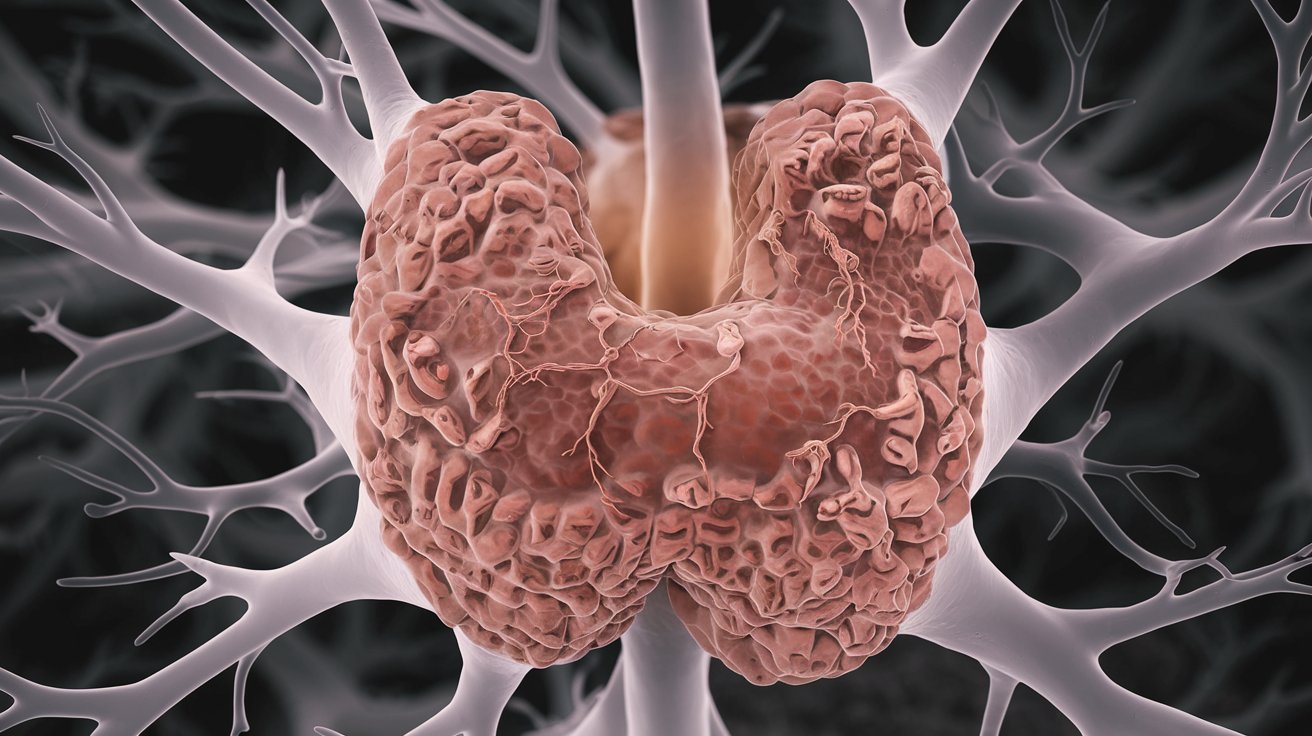
Multiple endocrine neoplasia type 2 (MEN2) is a rare genetic disorder that affects the endocrine system, leading to the development of tumors in various glands. MEN2 is caused by mutations in the RET gene, which plays a crucial role in cell growth and development. Individuals with MEN2 are at a higher risk of developing medullary thyroid carcinoma, pheochromocytoma, and parathyroid adenomas. Early diagnosis and treatment are essential to manage the condition effectively. Understanding the symptoms, genetic testing options, and treatment strategies can significantly improve the quality of life for those affected by MEN2. Let's dive into 25 intriguing facts about Multiple endocrine neoplasia type 2 to better understand this complex condition.
Key Takeaways:
- MEN2 is a rare genetic disorder causing tumors in endocrine glands. It has two subtypes, each with distinct characteristics and risks. Early diagnosis and genetic testing are crucial for effective management.
- Symptoms of MEN2 include thyroid cancer, high blood pressure, and overactive parathyroid glands. Treatment involves surgery, medications, and regular monitoring by an endocrinologist. Genetic counseling and support groups play a vital role in managing the condition.
Understanding Multiple Endocrine Neoplasia Type 2 (MEN2)
Multiple Endocrine Neoplasia Type 2 (MEN2) is a rare genetic disorder. It affects the endocrine glands, leading to the development of tumors. Let's dive into some fascinating facts about this condition.
-
MEN2 is caused by mutations in the RET gene. This gene provides instructions for producing a protein involved in cell signaling and growth.
-
There are two main subtypes of MEN2: MEN2A and MEN2B. Each subtype has distinct characteristics and associated risks.
-
MEN2A is more common than MEN2B. It accounts for about 95% of all MEN2 cases.
-
Medullary thyroid carcinoma (MTC) is a hallmark of MEN2. Nearly all individuals with MEN2 will develop this type of thyroid cancer.
-
MEN2A is also associated with pheochromocytomas. These are tumors of the adrenal glands that can cause high blood pressure.
-
Hyperparathyroidism is another feature of MEN2A. This condition results from overactive parathyroid glands, leading to high calcium levels in the blood.
-
MEN2B is characterized by a more aggressive form of MTC. It often appears at a younger age compared to MEN2A.
-
Individuals with MEN2B may develop mucosal neuromas. These benign tumors occur on the lips, tongue, and lining of the mouth.
-
Marfanoid habitus is a physical trait seen in MEN2B. It includes features like a tall, slender build and long fingers.
-
Genetic testing can identify RET mutations. This helps in diagnosing MEN2 and guiding treatment decisions.
Symptoms and Diagnosis of MEN2
Recognizing the symptoms and getting an accurate diagnosis is crucial for managing MEN2. Here are some key points to consider.
-
Early symptoms of MTC include a lump in the neck, difficulty swallowing, and changes in voice.
-
Pheochromocytomas can cause episodes of high blood pressure, headaches, sweating, and rapid heart rate.
-
Hyperparathyroidism may lead to symptoms like kidney stones, bone pain, and fatigue.
-
Mucosal neuromas in MEN2B can cause a bumpy appearance on the lips and tongue.
-
Genetic counseling is recommended for families with a history of MEN2. It helps assess the risk of passing the condition to offspring.
-
Blood tests measuring calcitonin levels can aid in diagnosing MTC. Elevated levels of this hormone are a marker for the cancer.
-
Imaging studies like ultrasound, CT scans, and MRI are used to detect tumors in the thyroid, adrenal glands, and other areas.
-
Biopsy of thyroid nodules can confirm the presence of MTC. This involves taking a small tissue sample for examination under a microscope.
Treatment and Management of MEN2
Managing MEN2 involves a combination of surgical, medical, and lifestyle approaches. Here are some important aspects of treatment.
-
Prophylactic thyroidectomy is recommended for individuals with RET mutations. Removing the thyroid gland early can prevent the development of MTC.
-
Surgery is the primary treatment for pheochromocytomas. Removing these tumors can help control blood pressure and prevent complications.
-
Medications like beta-blockers and alpha-blockers may be used to manage symptoms of pheochromocytomas before surgery.
-
Monitoring calcium levels is crucial for individuals with hyperparathyroidism. Treatment may include medications or surgery to remove overactive parathyroid glands.
-
Regular follow-up with an endocrinologist is essential. This helps monitor for new tumors and manage hormone levels.
-
Genetic testing of family members can identify those at risk. Early intervention can improve outcomes and prevent complications.
-
Support groups and counseling can provide emotional support. Connecting with others who have MEN2 can help individuals and families cope with the challenges of the condition.
Final Thoughts on MEN2
Understanding Multiple endocrine neoplasia type 2 (MEN2) can be life-changing. This genetic disorder affects the endocrine system, causing tumors in glands like the thyroid and adrenal glands. Early diagnosis is crucial. Knowing the symptoms, such as lumps in the neck or high blood pressure, can lead to timely medical intervention. Genetic testing plays a vital role in identifying MEN2, especially for those with a family history. Treatment often involves surgery to remove affected glands and regular monitoring to catch any new developments. Staying informed and proactive can make a significant difference in managing MEN2. Always consult healthcare professionals for personalized advice and treatment plans. By staying vigilant and educated, individuals with MEN2 can lead healthier, more manageable lives.
Frequently Asked Questions
Was this page helpful?
Our commitment to delivering trustworthy and engaging content is at the heart of what we do. Each fact on our site is contributed by real users like you, bringing a wealth of diverse insights and information. To ensure the highest standards of accuracy and reliability, our dedicated editors meticulously review each submission. This process guarantees that the facts we share are not only fascinating but also credible. Trust in our commitment to quality and authenticity as you explore and learn with us.
